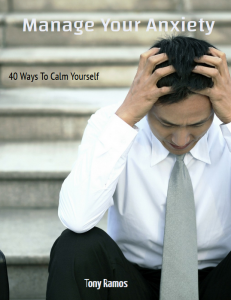
What is silent walking? Know its benefits and how to practise it | Health
Silent walking or walking solo without any distraction is gaining popularity after TikTok creator Mady Maio talked about it on social media sharing her own experience of embracing mindfulness and movement following advice of her nutritionist and boyfriend. It appears silent walking is an ancient concept and popular among Zen Buddhist monks who call this walking meditation. Silent walking combines benefits of mindfulness and physical exercise and is a wonderful way to beat stress. It can also help bring mental clarity. If you are not accustomed to silence, start with walking for 10-15 minutes per day and gradually increase the duration. (Also read: Minimum number of steps you should walk to avoid lifestyle diseases; fitness experts reveal)
The silent walking practice provides a route to inner calm and mental health, which has its roots in mindfulness and meditation. (Pixabay)
“Carving out time for yourself and your mind is difficult in this busy and world. Finding these peaceful moments in our active society can be a priceless gift. The silent walking practice provides a route to inner calm and mental health, which has its roots in mindfulness and meditation. Silent sauntering, also termed as walking meditation, is a mindfulness technique that implicates manoeuvring deliberately and measuredly, frequently in silence. It can bring inner calm whilst being fully aware in the immediate moment. This approach encompasses mindfulness principles and concentrates on cognizing each respiration and stride. It edifies you to liberate apprehension and other diversions so that you may fully treasure the present instant,” says Dr Chandni Tugnait is M.D. (Alternative Medicines), Psychotherapist, Life Coach, Business Coach, NLP Expert, Healer, Founder & Director – Gateway of Healing.
Here are some benefits of silent walking for mental health as per Dr Chandni:
1. Stress release
You can allay tension and boost relaxation by concentrating on your breath and footfalls, diminishing the effects of stressors.
2. Apprehension regulation
Silent ambulation is a placid experience for many who wrestle with anxiety. It facilitates a sense of command by redirecting attention away from disquieting thoughts and onto the somatic sensations of walking.
3. Superior self-cognizance
Self-awareness is promoted by silent perambulation. Enhanced self-understanding and emotional regulation result from being able to explore your thoughts and feelings uninhibitedly.
4. Improved concentration
The practice of walking meditation improves concentration and mental clarity. You may enhance your capacity to concentrate daily by teaching your mind to stay in the present.
5. Enhanced mood
Walking silently has been shown to improve mood. Endorphins, or ‘feel-good’ hormones, are released when physical exercise is combined with mindfulness.
Here are some ways of practicing of silent walking
Locate a quiet space: Choose a calm area that is free of distractions, preferably in nature. It might be a park, a trail through the woods, or even a peaceful place within your house.
Start with your posture: For some time, remain still while planting your feet firmly on the ground. Keep your posture comfortable but upright.
Follow the methodology: Commence gently and pay intimate attention to each stride you take. As your feet elevate, manoeuvre, and touch the terrain, note the sensations you are undergoing. Sustain a constant pulse.
Concentrate on your breathing: Breathe in rhythm with your movements. As you lift one foot, inhale; as you lower it, exhale. Move with the help of your breath.
Accept silence: Practice in silence if that is feasible. Use noise-cancelling headphones or calming music to stay focused if the setting is noisy.
Duration: Start with brief sessions and lengthen them gradually as you feel more at ease. For full advantage, aim for at least 10-15 minutes.
“The ritual of quiet strolling gives a road to mental lucidity, emotional equilibrium, and inner stillness. It is simple yet profound. It provides an invaluable occasion to take a respite from the turmoil and re-forge our bonds with ourselves amid our frenzied lives. Just recall that the objective of quiet strolling is the voyage rather than the destination. It is a technique to build a sturdier connection with the sphere around you and a perpetual investigation of your inner landscape. So, lace up your kicks, and embark on an excursion to uncover your true self,” concludes Dr Tugnait.
“Exciting news! Hindustan Times is now on WhatsApp Channels  Subscribe today by clicking the link and stay updated with the latest news!” Click here!
Subscribe today by clicking the link and stay updated with the latest news!” Click here!
Source link

:quality(70)/cloudfront-us-east-1.images.arcpublishing.com/shawmedia/KZDXENLFBNGCZLPLE5LRQGTXYE.JPG)





